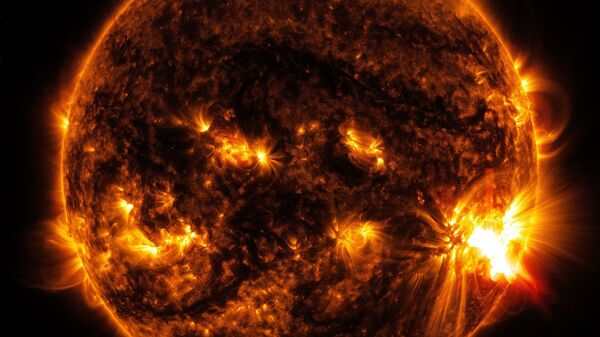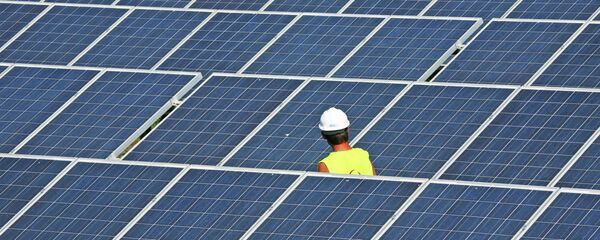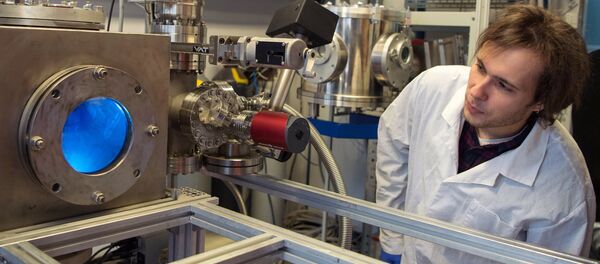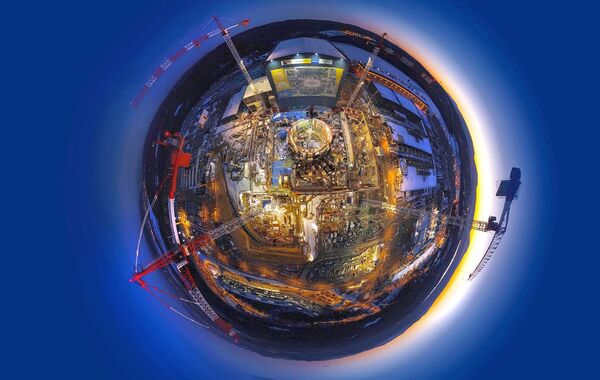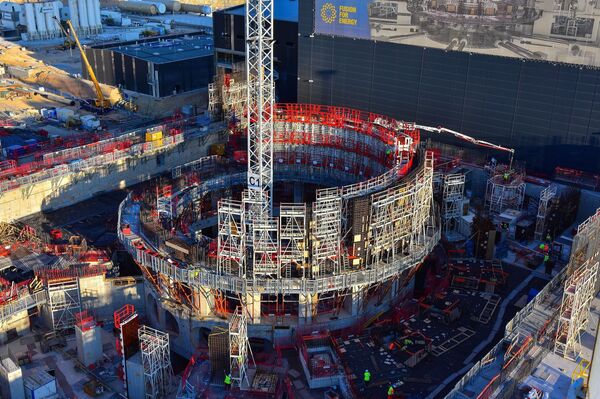ITER project general director Bernard Bigot announced last week that the ambitious $23.7 billion nuclear fusion research and engineering megaproject in Saint-Paul-les-Durance, southern France is now over 50% finished. The project, whose participants include Russia, the EU, the US, China, India, Japan, South Korea and Switzerland, envisions completing the assembly of its doughnut-shaped tokamak reactor by 2021, and starting the process of superheating hydrogen atoms to 150 million degrees Celsius – ten times the temperature of the Sun's core, by 2025.
In the 20th century, Soviet physicists achieved a theoretical breakthrough on how to control the thermonuclear fusion process, coming up with the idea of the tokamak, a device made from magnetic coils and generating a powerful magnetic field to confine plasma fuel in a torus ring-like reactor.

Under the tokamak principle, deuterium and tritium isotopes of hydrogen are introduced into the chamber in gaseous form, enabling operators to separate electrons from them. The ionized plasma mixture is then heated to 150 million degrees Celsius, with the nuclei of the deuterium and tritium giving rise to helium nuclei. The process results in the release of fast neutrons, whose energy, transferred to a carrier of heat energy such as water, can then serve to create electricity, including via a conventional thermal power station.
Deuterium and tritium-based fuel will be used to fuel the fusion reaction. The reaction will then heat the reactor blankets – special modules inside the tokamak. From there, water will be collected into pools, where it will be cooled. Since it is experimental, the ITER reactor itself will not supply power to the French energy grid.
Russia Playing Crucial Role in Project
Russia, as heir to the pioneering work carried out by Soviet scientists, has played an integral role in the ITER project from the beginning, providing technology, know-how and funding for the experimental facility.
This year, Russia supplied the first of the 23 metric ton branch pipe components for ITER's vacuum chamber. In the meantime, the St. Peterburg-based Sredne-Nevsky Shipyard is tasked with providing the reactor's toroidal coil magnetic field generator parts, recently finishing the fifth of the eight doughnut-shaped components necessary. When delivered, these will be used to assemble the three-hundred-ton reactor ring module.
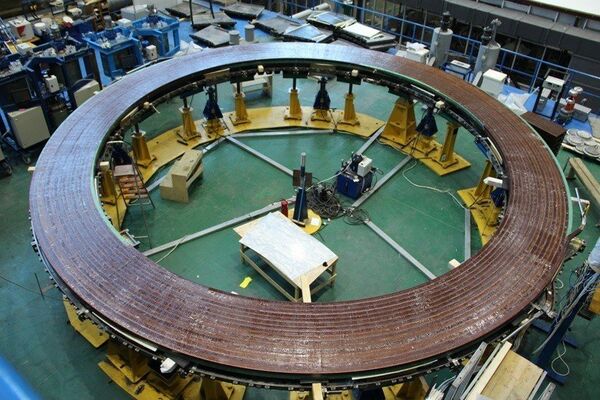
Anatoly Krasilnikov, director of ITER Center, the Russian branch of the ITER project, explained that in addition to those parts, Russia has provided the ITER facility with coil superconductors and switching equipment. Supplies of these and other components will continue into 2018.
"ITER is a very complex design. All of its systems are unique, because they are being created for the first time," Krasilnikov said, speaking to RIA Novosti.
"There are signs according to which physicists can discern that a plasma disruption is coming. A technique for predicting breakdowns and preventing their occurrence is under development. Scientists from the [Moscow-based] Kurchatov Institute are creating models of the disruptions and how they can be impacted to mitigate them," Krasilnikov said.
ITER project scientists calculate that their working experimental generator will generate about 500 megawatts of energy, five times the amount it consumes through its operation. If successful, the experiment will give rise to the DEMOnstration Power Station project, a commercial project whose engineering design is expected to be completed by the mid-2020s on the basis of the experimentation carried out by ITER.
Proponents of thermonuclear power laud it as a clean source of energy compared to traditional sources, and point out that it is not as dangerous as nuclear power. Skeptics suggest however that the technology will remain an expensive alternative to traditional fuels, so long as the latter remain available in significant quantities.
